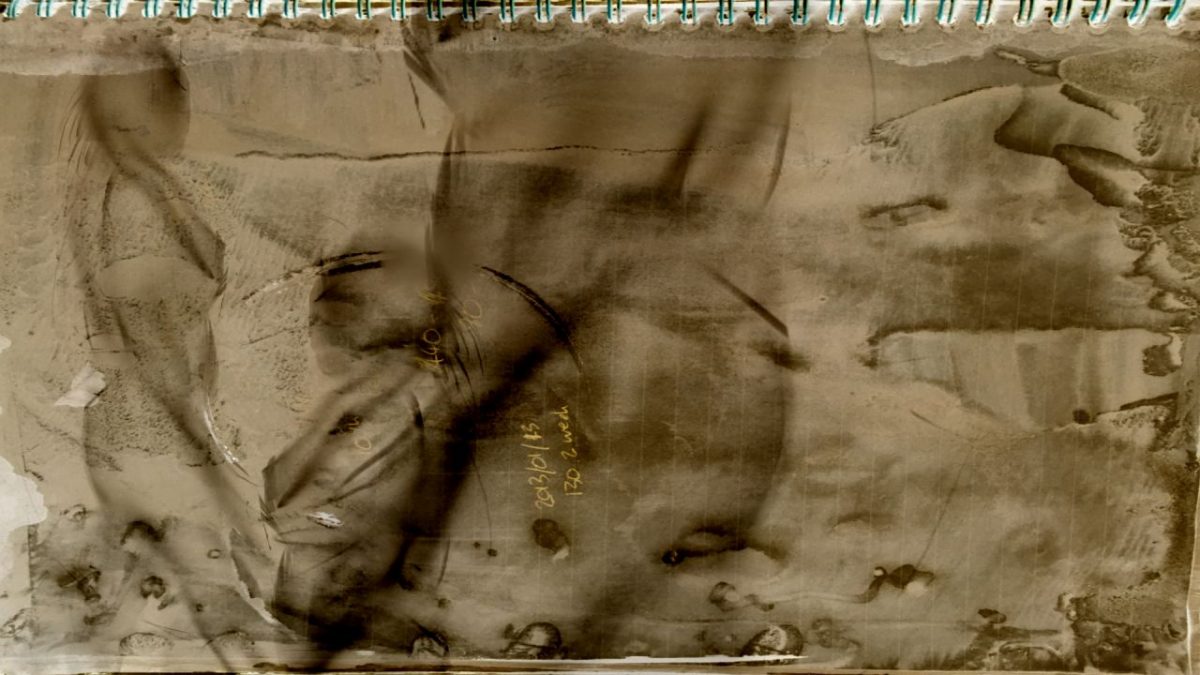There is a strong relationship of mutual influence between cinema and dance. Both art forms seek to communicate with an audience through movement, syncopation, shape and rhythm.
Walk cycles and movement are a key part of my work for my Visual Research module, creating animations in TVpaint based on community drawings. That research is still ongoing and can be found on:
Here I am just posting some of my preliminary work in TVPaint, experimenting with blending duplicate layers in different ways to produce ghosting effects with interacting figures. I think the approach has a lot of potential, but obviously need to spend a lot more time learning figure animation to improve the figures themselves. I plan to take this further in Part 5 of the course after my animation skills are improved.
TASK:
How could you devise a dance or movement based animation? This could include a body, hands or feet in shot or merely the traces of their movement. If the latter, consider the ways in which particular materials influence the way you move when using them as well as the scale that you can work at. Create an animatic in your chosen editing program to your ideas.
Make at least one, but no more than three, animation tests to explore your ideas and load these to your learning log along with a brief description of your intentions and findings.
Extend this exercise by using one of your animatics or experiments to develop into an animation. Upload this to your learning log.
Other completely different approaches, building on the work of Maya Deren would be to focus on photography and video of shadows and reflections on water. It would be interesting then to combine these with drawn and painted animation effects.
Inspiration
See post on May Deren used principles of choreography to dictate her choices as a film-maker.
Norman McLaren, Len Lye and Mary Ellen Bute used the principles of dance and sometimes dancers themselves as the basis for their animations.
George Eksts, Rehearsal, 2017, Courtesy the artist and Tintype, London. 7.34 mins
George Eksts worked on a project with Animate in 2015 which opened up the possibilities of using digital space. Working with with a choreographer and dancer to perform, record and then animate the human body, Eksts chose to place this figure within a digitally created ‘white cube’ gallery. As one of the selected artists for the 2018 Whitechapel Open, Eksts invited other artists in the exhibition to position their work in this digital gallery ‘set’.
Erica Russell
Done in natural media with a mixture of paintbrush strokes, coloured pencil and charcoal. Possibly based on actual film footage? Maybe with a bit of compositing at times for the backgrounds.
Towards the end of Triangle, and for a lot of Feet of song, maybe a stencil technique is used with some kind of spray paint. Shots around 7:15 look like watercolour paint, paying careful attention to negative space to look stencilled. She changes the paper stock on the paintbrush scenes to something a lot more thick and durable so that the paint doesn’t bleed.
See also Triangle which I prefer.
https://www.facebook.com/watch/?v=1143358079171564&extid=6fmj6y6tx9NZpDKu
NB!! Look at sandart
